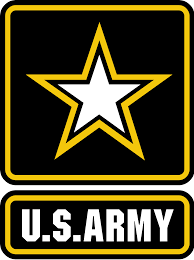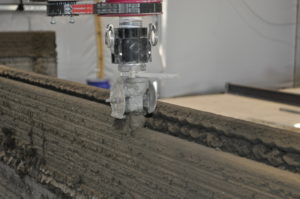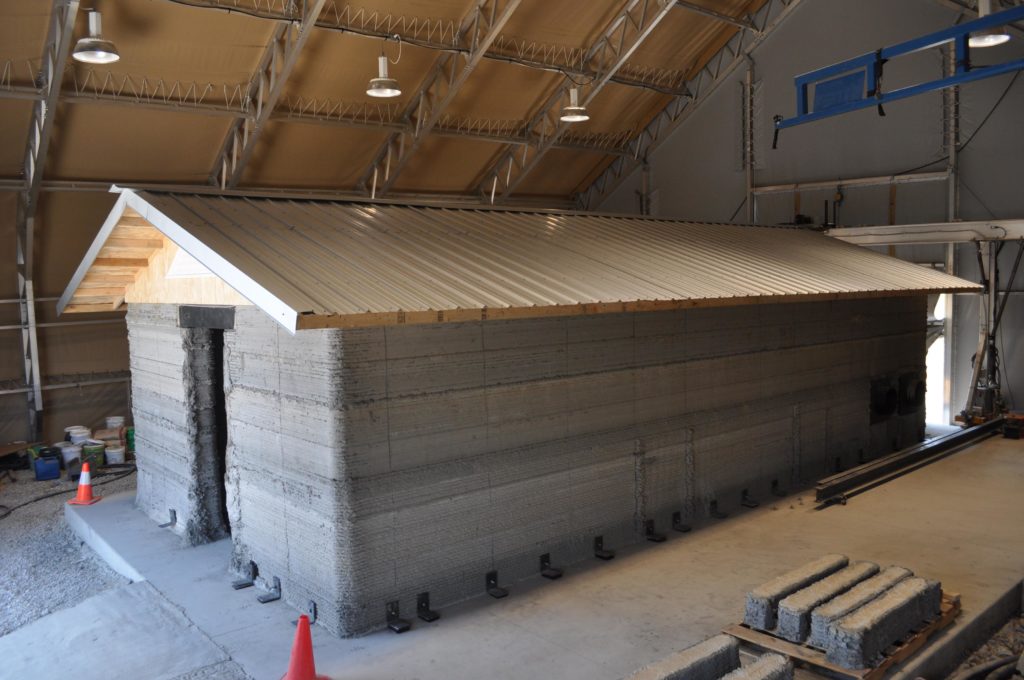Live Demonstration of ACES Concrete 3D Printing Technology at CERL US Army to Print house in a day: Part 1
 Last August, the US Army 3D printed a complete barracks, also known as a B-Hut, out of concrete, as part of a three-year program called Automated Construction of Expeditionary Structures (ACES). The ACES program is looking into 3D printing as a means to create semi-permanent structures out of concrete that’s made from locally available materials; the overall goal is to decrease the number of building materials that have to be shipped by half and lower construction manpower requirements by 62% in comparison to expedient plywood construction. This kind of project represents a whole new way for the military to manufacture on the go.
Last August, the US Army 3D printed a complete barracks, also known as a B-Hut, out of concrete, as part of a three-year program called Automated Construction of Expeditionary Structures (ACES). The ACES program is looking into 3D printing as a means to create semi-permanent structures out of concrete that’s made from locally available materials; the overall goal is to decrease the number of building materials that have to be shipped by half and lower construction manpower requirements by 62% in comparison to expedient plywood construction. This kind of project represents a whole new way for the military to manufacture on the go.
The 3D printed B-Hut, which measures 512 square feet, was fabricated out of the Army’s patented concrete mixture at the Engineer Research and Development Center’s Construction Engineering Research Laboratory (CERL) in Champaign, Illinois…which is precisely where I happen to be right now. I was invited to see a live demonstration of the ACES technology at CERL, which is only about a four-hour drive from my house. There was no way I could pass up this opportunity – it’s one thing to see pictures of the original B-Hut being 3D printed, and video of concrete being extruded for construction projects, but it’s another thing entirely to see it happen right in front of you.
In April, several demonstrations of new devices and technologies Army personnel have been experimenting with, including the shed-sized ACES, were carried out at Fort Leonard Wood in Missouri. ACES, which is being developed by the Army, NASA, and Caterpillar, printed its layers of concrete and aggregate outside for the first time during these tests, and the technology is being used outside again at this demonstration.
CERL’s goal for this demonstration is to successfully 3D print the exterior concrete walls of another 512 square foot building in 24 hours. The ACES team is being assisted by Marines from the 1st Marine Expeditionary Force and the Chicago-based architectural and engineering firm of Skidmore, Owings, and Merrill (SOM) for this demonstration.The ACES project offers the Army the ability to 3D print custom-designed expeditionary materials and buildings. These structures, which are also expected to have an improved energy performance over buildings constructed with expedient plywood, can improve quality of life, security, and safety for forward-deployed contractors and troops, as the patented concrete mixture can 3D print buildings with the necessary structural strength. The concrete mixture is made by combining water, liquid admixture, and solid mix, which can be transported and combined with the other two elements on-site to make up the composition.
 The technology can potentially lower the amount of shipped material from 5 tons to less than 2.5 tons, decrease the amount of required personnel from eight to three or four, and reduce construction time per structure from five days to just one.
The technology can potentially lower the amount of shipped material from 5 tons to less than 2.5 tons, decrease the amount of required personnel from eight to three or four, and reduce construction time per structure from five days to just one.
Additionally, the ACES program can lower the amount of logistics and resources that are typically associated with material shipments to sustain this type of construction.
Things got off to a bit of a rocky start this afternoon at CERL in Illinois. The big enemy is rain: Michael Case, PhD, the program manager, told me that one of the issues with concrete is evaporation drying. So when the forecast showed rain for Thursday afternoon, the start time of the demonstration was moved up a few hours. But they had to stop pretty quickly due to an issue.

Sarah Saunders taking the first shots of the US Military aiming to 3D print a barracks in 24 hours.
Dr. Case explained that the material used at the Fort Leonard Wood demonstration was sharp and more angular, which tore up the inside of the pump. The material here at CERL is more rounded and less damaging, but the team realized they would need to replace the pump before things could really get going. By the time this was completed, it was nearly 5 pm – the original demonstration start time. The team got the ACES technology working, but had to readjust the material mixture after the first layer had been extruded because it was too wet and “sloppy,” but by the second layer, this was worked out. The materials science work that goes into this technology is just astounding.
We’re keeping an eye on the radar and the skies, in hopes that things will go off smoothly and we’ll see a fully 3D printed concrete structure by tomorrow afternoon. In the meantime, keep your eye here on 3DPrint.com, as I’ll be telling you more about CERL and its ACES technology over the next few days.
Discuss this story and other 3D printing topics at 3DPrintBoard.com or share your thoughts in the comments below.
Subscribe to Our Email Newsletter
Stay up-to-date on all the latest news from the 3D printing industry and receive information and offers from third party vendors.
Print Services
Upload your 3D Models and get them printed quickly and efficiently.
You May Also Like
Nikon SLM Solutions Sells SLM 500 to Primary Weapon Systems to Expand Suppressor Production
Primary Weapons Systems (PWS) is a Boise, Idaho-based manufacturer of suppressors, firearms, and related components. A subsidiary of Vigilant Gear and a sister company to aftermarket Glock slide manufacturer Lone...
3DPOD 261: Tooling and Cooling for AM with Jason Murphy, NXC MFG
Jason Murphy´s NXC MFG (Next Chapter Manufacturing) is not a generalist service; instead, the company specializes in making tooling. Using LPBF and binder jet, the company produces some of the...
HP and Firestorm Labs Form Partnership to Use Multi Jet Fusion 3D Printers in Deployable Factories
HP Inc., maker of a range of additive manufacturing (AM) solutions including the Multi Jet Fusion (MJF) ecosystem, has announced a partnership with Firestorm Labs, a developer of containerized, deployable...
3D Printing News Briefs, July 2, 2025: Copper Alloys, Defense Manufacturing, & More
We’re starting off with metals in today’s 3D Printing News Briefs, as Farsoon has unveiled a large-scale AM solution for copper alloys, and Meltio used its wire-laser metal solution to...

































